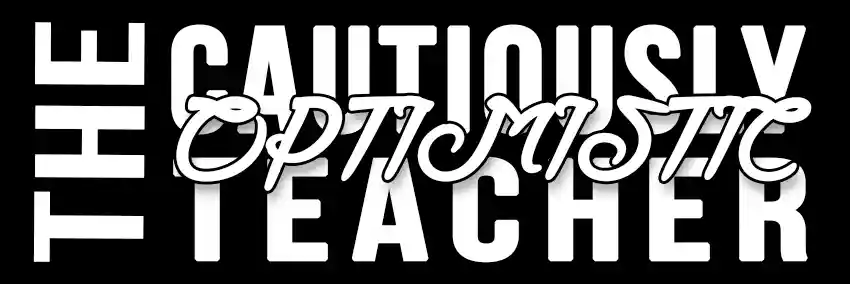Best Flexible Grouping Strategies for the Classroom
In today’s ever-evolving educational landscape, the term “flexible grouping” has steadily risen to the forefront of teaching strategies. At its core, flexible grouping is a dynamic approach to organizing students into various groups for learning purposes. Unlike traditional static groups, where students remain in the same clusters regardless of the task or topic, flexible grouping emphasizes the fluidity of group composition. This means that students can be regrouped based on different criteria, such as skill level, interest, or learning style, depending on the specific lesson or activity.
The significance of flexible grouping cannot be overstated. With classrooms becoming increasingly diverse, both culturally and in terms of learning abilities, a one-size-fits-all approach no longer suffices. Students come to the classroom with a myriad of backgrounds, strengths, and challenges. The beauty of flexible grouping is that it acknowledges this diversity and leverages it for the benefit of all students. By allowing for frequent changes in group composition, flexible grouping ensures that students have the opportunity to work with various peers, thereby enriching their learning experience and fostering a more inclusive classroom environment.
Furthermore, dynamic classroom settings are now the norm rather than the exception. With the integration of technology, project-based learning, and other modern pedagogical methods, the traditional classroom structure has been disrupted in the best possible way. In such vibrant settings, flexible grouping serves as a cornerstone, allowing educators to swiftly adapt to changing curricular demands and student needs.
Understanding Flexible Grouping

Definition and Key Principles
Flexible grouping is a dynamic instructional strategy where students are frequently shifted among different groups based on various criteria like current skill levels, learning objectives, student interests, or other instructional needs. This approach is rooted in the belief that students’ needs are fluid and change over time. Instead of binding them into fixed groups, educators can tailor instruction more precisely by altering group compositions as needed.
Several key principles underpin flexible grouping:
Fluidity: The core essence of flexible grouping. Students move between different groups for different activities, ensuring they aren’t pigeonholed by a singular label or skill level.
Diversity of Interaction: By working in various group settings, students interact with a wider range of peers, enabling broader social interactions and diverse learning experiences.
Responsive Teaching: Educators can promptly react to assessment data, student feedback, or observations, allowing them to address emerging needs in real-time.
Differences between Traditional and Flexible Grouping
Traditional grouping, often referred to as static grouping, generally keeps students in the same groups for an extended period, typically for a semester or even an entire academic year. These groups can be based on perceived ability, standardized test scores, or other fixed criteria. The primary drawback is that it can inadvertently label students, potentially limiting their growth or the perceptions of their capabilities.
In contrast, flexible grouping is ever-changing. Today’s advanced math group might be tomorrow’s mixed-ability group for a science project. This approach ensures students aren’t confined by labels, fostering a growth mindset and recognizing the multifaceted nature of individual strengths and weaknesses.
Benefits of Flexible Grouping in Diverse Classroom Environments
Flexible grouping shines brightest in diverse classroom settings, offering a plethora of benefits:
Individualized Learning: Allows educators to address specific student needs, ensuring that instruction is both challenging and accessible.
Social Skills Development: Students learn to collaborate with various peers, fostering adaptability and improving communication skills.
Promotion of Equity: All students, regardless of their initial skill levels, get an opportunity to participate in both homogeneous and heterogeneous group settings, ensuring everyone has access to varied learning experiences.
Reduction of Stigma: By frequently changing groups, no student is permanently labeled as “advanced” or “struggling,” promoting a more inclusive classroom atmosphere.
Types of Flexible Grouping

As educators explore the domain of flexible grouping, it becomes evident that this approach isn’t limited to just one format. Depending on the lesson’s objectives, the content being delivered, and the students’ current needs, teachers can adopt various types of flexible group structures. Let’s delve into the primary types:
Whole Class Instruction
At times, the most effective grouping can be the entire class. This is especially true when introducing new concepts, discussing overarching themes, or when a shared experience is valuable for all students. While this might seem counter to the notion of “grouping,” whole class instruction is an integral part of the flexible grouping model. It ensures that certain core ideas are universally understood before students diverge into more specialized groups.
Small Group Instruction
Perhaps the most commonly associated format with flexible grouping, small group instruction allows for targeted teaching. By breaking the class into smaller subsets:
Teachers can focus on specific skill levels, ensuring that content is neither too challenging nor too simplistic.
Students have more opportunities to participate, ask questions, and engage with the material.
Collaborative projects or discussions can occur in a more intimate setting, allowing for deeper dives into subjects.
The composition of these groups can change regularly based on the evolving needs of the students or the curriculum’s demands.
Partner Work
Pairing students can be a powerful tool in the flexible grouping arsenal. Partner work promotes:
Peer teaching, where one student can explain concepts to another, reinforcing their understanding in the process.
Development of collaboration skills, as students must work closely with their partner.
Efficiency, especially during activities like peer reviews, brainstorming sessions, or paired readings.
The dynamic nature of flexible grouping ensures that students work with various partners over time, exposing them to different perspectives and collaboration styles.
Individual Work
While group work is vital, there’s undeniable value in solitary reflection and work. Individual tasks within the flexible grouping framework allow students to:
Work at their own pace, taking more time on challenging aspects or accelerating through areas of strength.
Develop self-reliance and independent problem-solving skills.
Reflect on personal understandings, fostering deeper comprehension and metacognition.
Strategies for Successful Implementation
Harnessing the full potential of flexible grouping requires more than just understanding its forms. To truly reap its benefits, educators need a strategic approach to its implementation. Here are some pivotal strategies to ensure successful integration:
Assessment-Driven Decisions
The foundation of effective flexible grouping lies in understanding where each student stands in terms of skills, comprehension, and needs. This insight is primarily derived from assessments.
Using Formative Assessments to Inform Grouping: Rather than relying solely on periodic standardized tests, consistent formative assessments like quizzes, discussions, and project evaluations provide real-time insights into student progress. This frequent feedback helps educators make informed decisions about how to group students effectively.
Adapting Groups Based on Student Progress and Needs: As students evolve, so should the group compositions. Regularly reassessing and regrouping ensures that the current structure remains relevant to the students’ requirements.
Rotational Models
By incorporating rotational models into the flexible grouping strategy, educators can ensure diverse learning experiences for students:
Station Rotation: Here, students rotate among various stations, each with a distinct activity or learning focus. This allows for a blend of instructional methods and group settings within a single lesson period.
Lab Rotation: Particularly effective in subjects requiring hands-on experiments or digital resources, lab rotation moves students between traditional instruction and computer or lab-based activities.
Flip Classroom Integration: In this model, students first access lesson content independently (e.g., through video lectures) and then use classroom time for collaborative activities, discussions, and hands-on practice, allowing for diverse group work.
Incorporate Student Choice
Empowerment can be a potent motivator for learning:
Allowing Students to Choose Groups Based on Interests or Strengths: Occasionally letting students choose their groups, especially for projects or topics they’re passionate about, can lead to increased engagement and ownership of the learning process.
Mix Skill Levels
Breaking the mold of homogeneous grouping by ability offers myriad advantages:
Combining Students of Varying Proficiencies to Promote Peer Teaching: Mixed-skill groups allow more advanced students to articulate and reinforce their understanding by explaining concepts, while peers who might be struggling can benefit from alternative explanations and peer support.
Use Technology Tools
Digital Platforms to Assist in Group Management and Assignments: Tools like learning management systems (LMS) or group organizing apps can help in efficiently creating, tracking, and adapting group structures. They can also facilitate the distribution of differentiated assignments based on group compositions.
Addressing Common Challenges

While flexible grouping offers numerous advantages, like any instructional strategy, it comes with its set of challenges. Addressing these proactively can pave the way for a smoother and more effective implementation.
Potential Pitfalls of Flexible Grouping
Over-reliance on One Grouping Method: Sticking exclusively to one type, like skill-based groups, can lead to inadvertent labeling of students. This may hinder their potential and curb growth.
Logistical Complications: Continuously shifting students among groups can be a logistical challenge, potentially leading to classroom management issues or confusion.
Overemphasis on Group Work: While group activities are essential, neglecting individual work might deprive students of opportunities for self-reflection and independent problem solving.
Strategies for Managing Mixed-Ability Groups
Differentiated Tasks: Within the same group, provide tasks of varying complexity to cater to different skill levels. This ensures that every student is appropriately challenged.
Peer Teaching Opportunities: Encourage students with a better grasp of the material to assist those facing difficulties. This not only reinforces their understanding but also fosters collaboration and empathy.
Regular Check-ins: Interact with mixed-ability groups more frequently to address questions, clear misconceptions, and ensure productive collaboration.
Ensuring Group Rotation and Preventing Stagnation
Scheduled Reassessments: Regularly evaluate student progress and adjust groupings accordingly. This can be monthly, quarterly, or even after major units or projects.
Random Grouping Activities: Introduce occasional activities where groups are formed randomly or based on criteria unrelated to academic ability, like shared interests or hobbies.
Set Clear Rotation Criteria: Have predefined criteria for when and why students will be rotated to different groups, ensuring the process is systematic and transparent.
Addressing Concerns from Parents or Stakeholders
Open Communication: From the outset, communicate the rationale, benefits, and methods of flexible grouping to parents and stakeholders. This helps in setting clear expectations and addressing misconceptions.
Feedback Channels: Create avenues for parents to voice their concerns or ask questions about the grouping strategy. This could be through regular parent-teacher meetings, feedback forms, or email communication.
Showcase Success Stories: Share instances of student success or positive outcomes resulting from flexible grouping. Real-world examples can often assuage doubts and highlight the strategy’s efficacy.
Tips for Seamless Transition

The fluid nature of flexible grouping means that students will often transition between various group configurations. These shifts, while beneficial for learning, can pose challenges if not managed adeptly. Here are some strategies to ensure these transitions are smooth and effective:
Preparing Students for Group Changes
Set Clear Expectations: From the very beginning, instill the idea that groups are fluid and will change based on various factors. Ensure students understand that regrouping is a part of the learning process and is not based on any singular evaluation of their abilities.
Develop a Growth Mindset: Encourage students to view these changes as opportunities for growth. Emphasize that moving between groups can provide different perspectives and learning experiences, rather than being a reflection of their competence.
Visual Aids: Use charts, digital platforms, or visual schedules to display group changes. This offers students a clear visual representation of their transitions, reducing uncertainty.
Effective Communication Strategies
Consistent Check-ins: Before and after group changes, hold brief class discussions. Before the transition, explain the rationale behind the upcoming shifts. After the transition, gather feedback and address any concerns.
Open-door Policy: Encourage students to approach you with any worries or suggestions regarding group configurations. Having a receptive attitude can alleviate anxieties and foster trust.
Use Clear, Neutral Language: When communicating group changes, avoid language that might infer hierarchy or ability levels. Phrases like “advanced” or “struggling” can be counterproductive. Instead, use neutral terms like “Group A” or “Blue Group”.
Classroom Management during Group Transitions
Structured Protocols: Have a defined procedure for moving between groups. This can include cues (like a bell or specific music), designated paths for movement, and clear starting and ending points for each transition.
Time Management: Allocate specific time blocks for transitions and ensure students stick to these. Using timers can help keep transitions brief and efficient.
Role Assignments: Assign roles to students, such as “materials collector” or “discussion leader”, to facilitate faster settling once they transition to new groups. With each student having a clear role, the group can quickly start their task.
Practice Makes Perfect: In the initial stages, practice transitions without any academic tasks involved. This helps students get accustomed to the process, ensuring future transitions are quicker and less disruptive.
Conclusion
In the ever-evolving landscape of education, methodologies that emphasize personalization and adaptability stand out as beacons for progress. Flexible grouping emerges as one such strategy, intertwining the tenets of individual learning styles with collaborative enrichment. By continuously adapting to the diverse needs of students, it encapsulates the essence of modern pedagogy where teaching is as dynamic as the learners themselves.
The myriad benefits, ranging from targeted instruction to fostering peer collaboration, underline its significance. Yet, its potency isn’t just in its structural flexibility, but in its philosophical underpinning: a belief that every student is unique, and our instructional methods should echo this diversity.
For educators standing at the crossroads of tradition and innovation, the journey of integrating flexible grouping might seem daunting. However, the path is paved with opportunities for transformative learning experiences. It’s a reminder that teaching isn’t about static models; it’s about fluidity, adaptability, and above all, responsiveness to the ever-changing tapestry of student needs and potentials.
In this era, where information is abundant but personal connection is paramount, educators are encouraged to see beyond the conventional. Embrace the dynamic, challenge the status quo, and continuously innovate. In the realm of flexible grouping, there’s always room for growth, always a new perspective to consider, and always a chance to make learning more resonant for every student.
Additional Resources
Recommended Reading
“Differentiation in Practice: A Resource Guide for Differentiating Curriculum” by Carol Ann Tomlinson: A comprehensive guide that delves deep into differentiated instruction and offers insights into grouping techniques.
“Drive: The Surprising Truth About What Motivates Us” by Daniel H. Pink: While not solely about flexible grouping, Pink’s exploration of motivation offers insights that can be applied when considering group dynamics and student engagement.
Online Platforms and Tools for Flexible Grouping
Classcraft: This platform gamifies the classroom experience, allowing for the creation of teams and missions, which can be tailored based on flexible grouping strategies.
Padlet: An interactive board where students can collaborate. Educators can form groups, assign tasks, and foster peer-to-peer interactions.
For free, simple, printable seating plan charts, click here.







